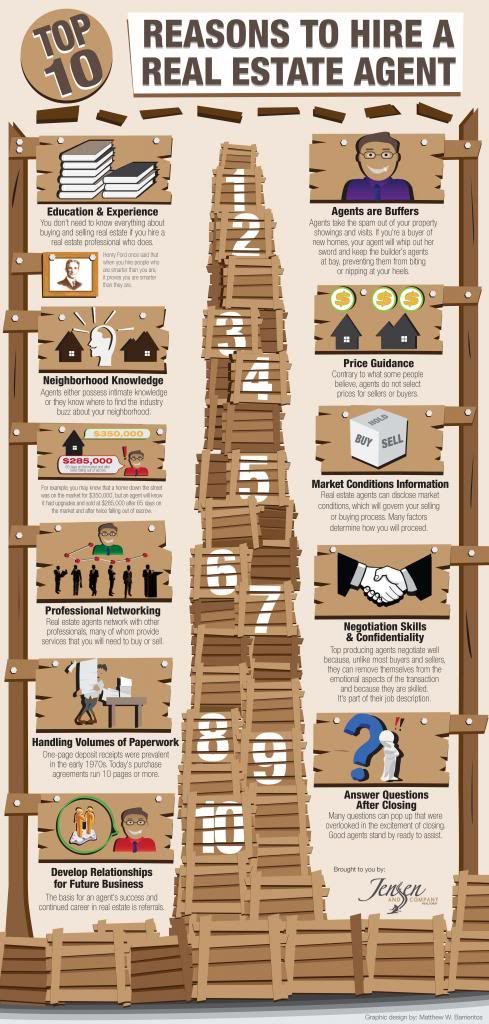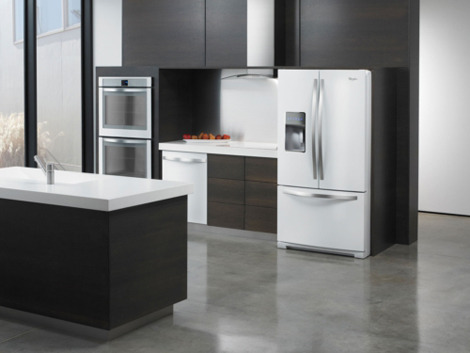After hitting the highest level in nearly four years, existing-home sales declined in September, but limited inventory conditions continued to pressure home prices in much of the country, according to the National Association of Realtors®.
Total existing-home sales1, which are completed transactions that include single-family homes, townhomes, condominiums and co-ops, declined 1.9 percent to a seasonally adjusted annual rate of 5.29 million in September from a downwardly revised 5.39 million in August, but are 10.7 percent above the 4.78 million-unit pace in September 2012. Sales have remained above year-ago levels for the past 27 months.
Lawrence Yun, NAR chief economist, said a decline was expected. “Affordability has fallen to a five-year low as home price increases easily outpaced income growth,” he said. “Expected rising mortgage interest rates will further lower affordability in upcoming months. Next month we may see some delays associated with the government shutdown.”
According to Freddie Mac, the national average commitment rate for a 30-year, conventional, fixed-rate mortgage rose to 4.49 percent in September from 4.46 percent in August, and is the highest since July 2011 when it was 4.55 percent; the rate was 3.47 percent in September 2012.
The national median existing-home price2 for all housing types was $199,200 in September, up 11.7 percent from September 2012. This is the 10th consecutive month of double-digit year-over-year increases.
Distressed homes3 – foreclosures and short sales – accounted for 14 percent of September sales, up from 12 percent in August, which was the lowest share since monthly tracking began in October 2008; they were 24 percent in September 2012. Lower levels in the share of distressed sales account for some of the growth in median price.
Nine percent of September sales were foreclosures, and 5 percent were short sales. Foreclosures sold for an average discount of 16 percent below market value in September, while short sales were discounted 12 percent.
Data from realtor.com,4 NAR’s listing site, show some of the strongest increases in listing price from a year ago are in the Detroit area, up 44.6 percent; Las Vegas, up 30.7 percent; and Sacramento, up 28.9 percent.
Total housing inventory at the end of September was unchanged at 2.21 million existing homes available for sale, which represents a 5.0-month supply5 at the current sales pace, compared with a 4.9-month supply in August. Unsold inventory is 1.8 percent above a year ago, when there was a 5.4-month supply.
NAR President Gary Thomas, broker-owner of Evergreen Realty in Villa Park, Calif., said there are far-ranging consequences from the repeating stalemates in Washington. “Just one impact of the recent government shutdown – delays in tax transcripts needed for approval of mortgage loans – put a monkey wrench in the transaction process and could negatively impact sales closings in next month’s report,” he said.
Thomas said flood insurance also is a concern. “Realtors® report that approximately 10 percent of transactions in September were located in flood zones, and that nearly one out of 10 of those transactions were delayed or canceled due to concerns over rising insurance rates.” Notably higher flood insurance rates went into effect on October 1, and could impact future sales in flood zones.
The median time on market for all homes was 50 days in September, up from 43 days in August, but much faster than the 70 days on market in September 2012. Short sales were on the market for a median of 93 days, while foreclosures typically sold in 43 days, and non-distressed homes took 49 days. Thirty-nine percent of homes sold in September were on the market for less than a month.
First-time buyers accounted for 28 percent of purchases in September, unchanged from August, but down from 32 percent in September 2012.
All-cash sales comprised 33 percent of transactions in September, up from 32 percent in August, and 28 percent in September 2012. Individual investors, who account for many cash sales, purchased 19 percent of homes in September, up from 17 percent in August, and 18 percent in September 2012. Last month, 74 percent of investors paid cash.
Single-family home sales slipped 1.5 percent to a seasonally adjusted annual rate of 4.68 million in September from 4.75 million in August, but are 10.9 percent above the 4.22 million-unit pace in September 2012. The median existing single-family home price was $199,300 in September, which is 11.4 percent higher than a year ago.
Existing condominium and co-op sales fell 4.7 percent to an annual rate of 610,000 units in September from 640,000 in August, but are 8.9 percent above the 560,000-unit level a year ago. The median existing condo price was $198,600 in September, up 14.2 percent from September 2012.
Regionally, existing-home sales in the Northeast declined 2.8 percent to an annual rate of 690,000 in September, but are 15.0 percent above September 2012. The median price in the Northeast was $240,900, up 2.3 percent from a year ago.
Existing-home sales in the Midwest fell 5.3 percent in September to a pace of 1.25 million, but are 12.6 percent higher than a year ago. The median price in the Midwest was $158,400, which is 9.0 percent above September 2012.
In the South, existing-home sales declined 1.4 percent to an annual level of 2.10 million in September, but are 9.9 percent above September 2012. The median price in the South was $171,600, up 13.9 percent from a year ago.
Existing-home sales in the West rose 1.6 percent to a pace of 1.25 million in September, and are 7.8 percent higher than a year ago. With ongoing inventory restrictions, the median price in the West rose to $286,300, which is 16.8 percent above September 2012.
The National Association of Realtors®, “The Voice for Real Estate,” is America’s largest trade association, representing 1 million members involved in all aspects of the residential and commercial real estate industries. For additional commentary and consumer information, visitwww.houselogic.com and http://retradio.com.
# # #
NOTE: For local information, please contact the local association of Realtors® for data from local multiple listing services. Local MLS data is the most accurate source of sales and price information in specific areas, although there may be differences in reporting methodology.
1Existing-home sales, which include single-family, townhomes, condominiums and co-ops, are based on transaction closings from Multiple Listing Services. Changes in sales trends outside of MLSs are not captured in the monthly series. NAR rebenchmarks home sales periodically using other sources to assess overall home sales trends, including sales not reported by MLSs.
Existing-home sales, based on closings, differ from the U.S. Census Bureau’s series on new single-family home sales, which are based on contracts or the acceptance of a deposit. Because of these differences, it is not uncommon for each series to move in different directions in the same month. In addition, existing-home sales, which account for more than 90 percent of total home sales, are based on a much larger data sample – about 40 percent of multiple listing service data each month – and typically are not subject to large prior-month revisions.
The annual rate for a particular month represents what the total number of actual sales for a year would be if the relative pace for that month were maintained for 12 consecutive months. Seasonally adjusted annual rates are used in reporting monthly data to factor out seasonal variations in resale activity. For example, home sales volume is normally higher in the summer than in the winter, primarily because of differences in the weather and family buying patterns. However, seasonal factors cannot compensate for abnormal weather patterns.
Single-family data collection began monthly in 1968, while condo data collection began quarterly in 1981; the series were combined in 1999 when monthly collection of condo data began. Prior to this period, single-family homes accounted for more than nine out of 10 purchases. Historic comparisons for total home sales prior to 1999 are based on monthly single-family sales, combined with the corresponding quarterly sales rate for condos.
2The median price is where half sold for more and half sold for less; medians are more typical of market conditions than average prices, which are skewed higher by a relatively small share of upper-end transactions. The only valid comparisons for median prices are with the same period a year earlier due to a seasonality in buying patterns. Month-to-month comparisons do not compensate for seasonal changes, especially for the timing of family buying patterns. Changes in the composition of sales can distort median price data. Year-ago median and mean prices sometimes are revised in an automated process if additional data is received.
The national median condo/co-op price often is higher than the median single-family home price because condos are concentrated in higher-cost housing markets. However, in a given area, single-family homes typically sell for more than condos as seen in NAR’s quarterly metro area price reports.
3Distressed sales (foreclosures and short sales), days on market, first-time buyers, all-cash transactions and investors are from a monthly survey for the NAR’s Realtors® Confidence Index, posted at Realtor.org.
5Total inventory and month’s supply data are available back through 1999, while single-family inventory and month’s supply are available back to 1982 (prior to 1999, single-family sales accounted for more than 90 percent of transactions and condos were measured only on a quarterly basis).
The Pending Home Sales Index for September will be released October 28 and existing-home sales for October is scheduled for November 20. The2013 National Association of Realtors® Profile of Home Buyers and Sellers, a large survey that evaluates the demographics, preferences, motivations, plans and experiences of recent home buyers and sellers, will be published November 4; all release times are 10:00 a.m. ET.







